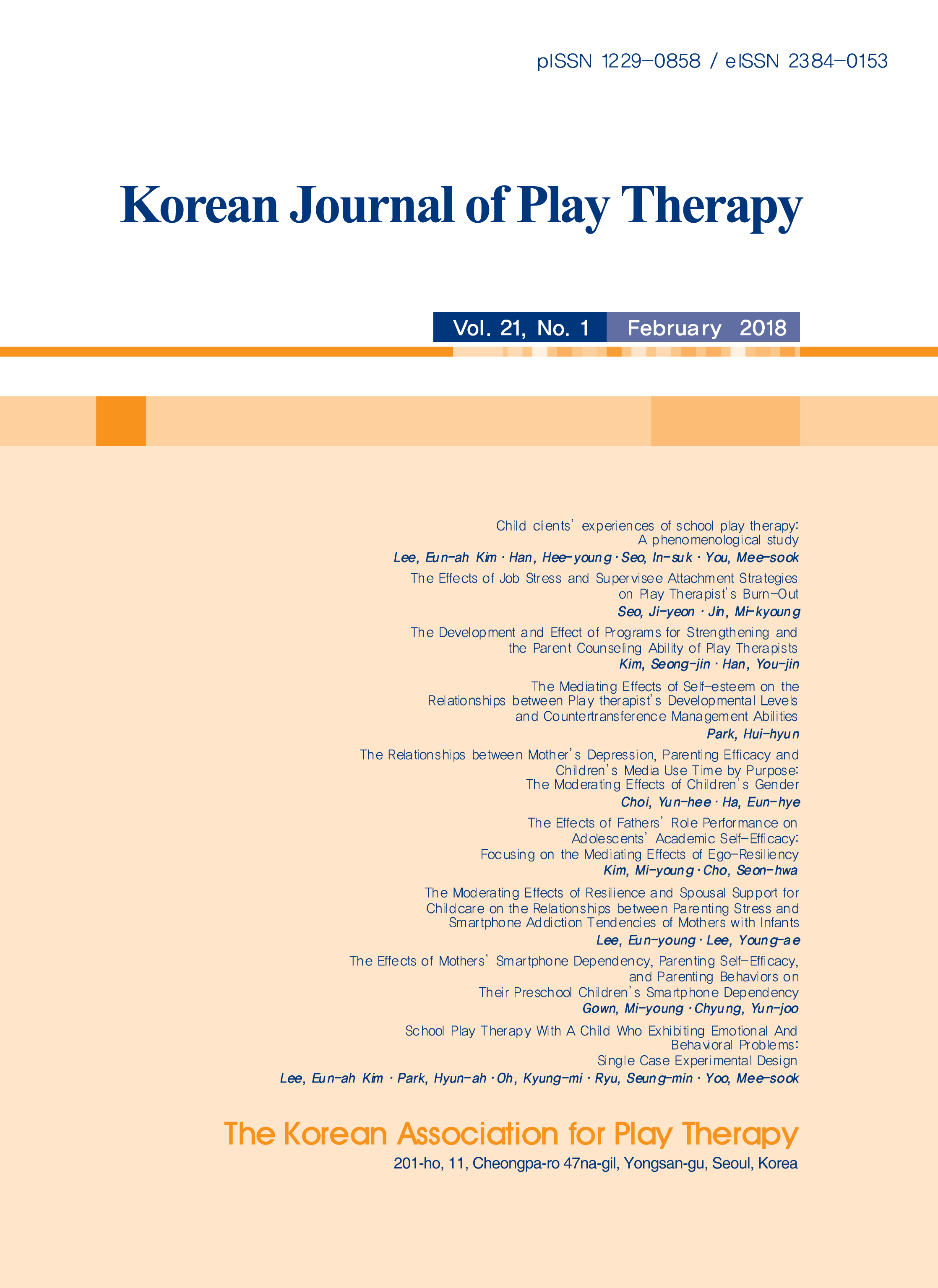본 연구에서는 어머니의 우울감, 양육효능감과 아동의 이용목적(교육목적, 놀이목적) 별 미디어 사용시간의 관계에서 아동 성별의 조절효과를 검증하였다. 한국아동패널의 7차년도(2014) 조사에 참여한 만 6세 아동(남아 803명, 여아 762명)과 그 어머니 1,565명의 자료를 사용하였다. 어머니의 우울척도(K6), 어머니의 양육효능감척도(PSOC), 아동의 이용목적(교육목적, 놀이목적) 별 미디어 사용시간을 어머니가 평가하였다. 연구 결과는 첫째, 놀이목적 미디어 사용시간에서는 어머니의 우울감이 높은 집단과 양육효능감이 낮은 집단, 아동 성별 중 남아가 놀이목적 사용시간이 길었다. 반면 교육목적 미디어 사용시간에서는 차이가 유의하지 않았다. 둘째, 어머니의 우울감과 아동의 놀이목적 미디어 사용시간의 관계에서 아동 성별의 상호작용효과가 나타나지 않았으나, 어머니의 양육효능감과 아동의 놀이목적 미디어 사용시간의 관계에서는 아동 성별의 상호작용효과가 유의하였다. 이원변량분석 결과, 여아가 어머니의 양육효능감 수준이 높은 경우 낮은 경우에 비해 놀이목적 미디어 사용시간이 더 적었다. 본 연구결과의 의의와 제한점, 이를 바탕으로 한 후속 연구에 대해 제안하였다.
This study aimed to examine the moderating effects of children’s gender on the relationships between mother’s depression, parenting efficacy, and children’s media use time by purpose (for example, for education, or entertainment). To achieve this goal, this study selected a sample of 1,565 mothers and their children(6 year old, 803 boys, 762 girls) from the 7th wave(2014) Panel Study on Korean Children(PSKC). The results of this study were as follows. First, in terms of media use for entertainment, the high maternal depressive group, the low parenting efficacy group, and boys exhibited longer media usage times. Second, there was significant interactional effects of the children’s gender on the relationships between mother's parenting efficacy and the children's media usage time for entertainment. The result of two way ANOVA revealed that girls spent less media usage time for entertainment when their mothers showed higher level of parenting efficacy.




